Like it’s neighbor,
Úbeda, Baeza is an Andalusian Renaissance town.
Its tourist office provides a map with over 50
attractions, but we’ll focus on just 1 square and 2
½ buildings: a secular palace, the cathedral (of
course), and a convent now in ruins but cleverly
displayed.

Lording it over the
neighbors
Let’s start with the Palacio
de Jabalquinto, perhaps Baeza’s best example of
civil architecture, combining a flamboyant Gothic
structure with Isabelline decorations on its
façade. Inside the Renaissance meets the Baroque
in its lovely courtyard.
The palacio was built for Juan Alfonso de Benavides, a
relative and favorite of King Fernando (of Fernando and
Isabella fame). Benavides was the lord of a nearby town
called Jabalquinto. His family was big in Baeza,
eventually producing a cardinal. (The Benavides often
fought for Baezan supremacy with a rival clan, the
Carvajals, until Isabella put a stop to it by tearing
down the Alcazar and town walls.)
This late 15th century building probably rose before the
Alcazar came down – but it reminded the Carvajals
and the rest of the town of the prestige of the Benavides
clan.
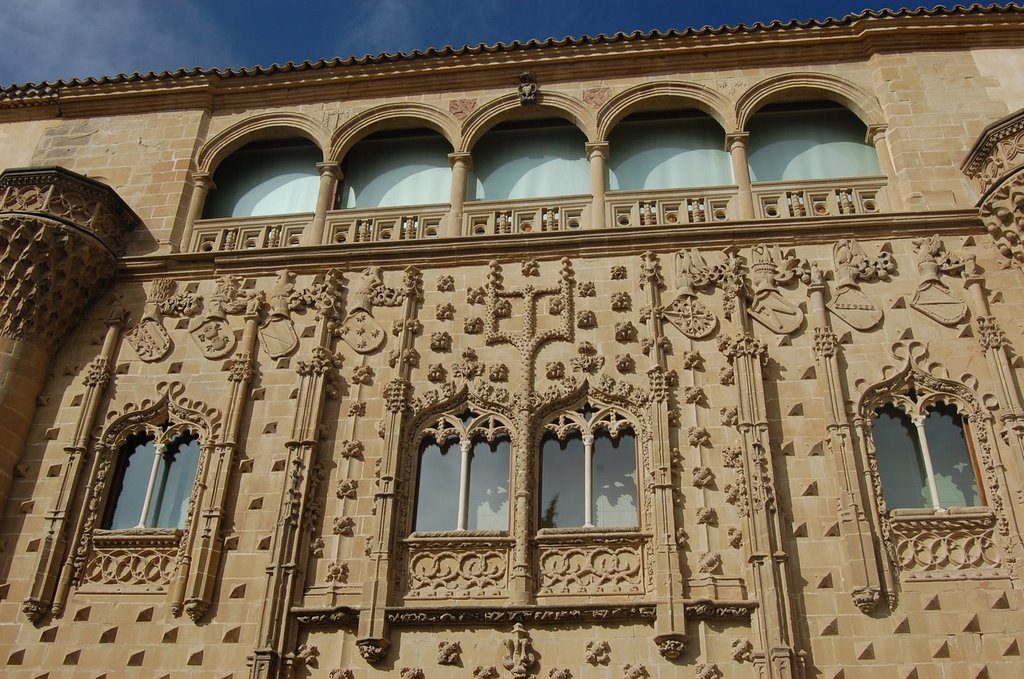
In our Andalusian travels, we had
gotten used to plain front buildings with a bit of
decoration around the doors. Not so here: nearly the
entire façade explodes in Gothic windows, 8
shields of various family members, and even stalactite
pillars suggesting Mudejar embellishment. The Renaissance
loggia was added later.
Today this building houses part of the Universidad
Internacional de Andalucia which started in 1994. Baeza
itself had a university much earlier, one of the few
Spanish towns with one as early as the 1500s. Over the
ages, it attracted intellectual talent including two of
Spain’s greatest poets, St. John of the Cross who
wrote his Spiritual Canticle here in the 16th century,
and the early 20th century Antonio Machado who taught
grammar.
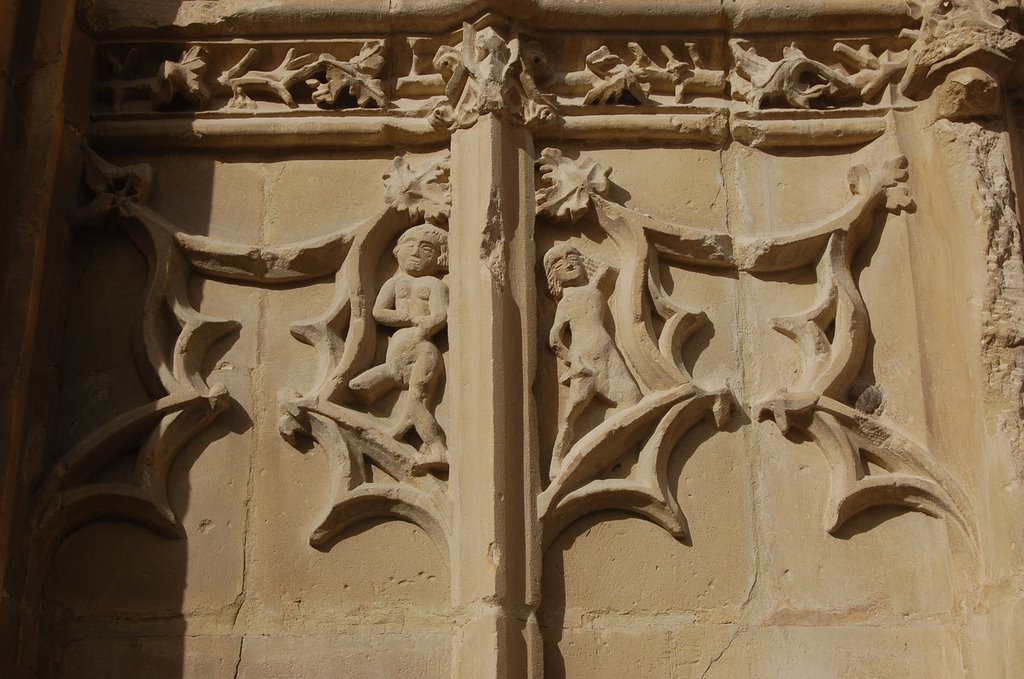
Above is a close-up of some of the intricate masonry.
Perhaps we have Adam and Eve with the fig leaf blown over
their heads. The facade is thought to be the work of Juan
Guas and Enrique Egas.
Inside the Benavides family accessed their living
quarters by climbing up this Baroque stairway with lions
on each side. (Note Queen Isabella on the right). Could
the walls be more ornate or the pillars more simple?
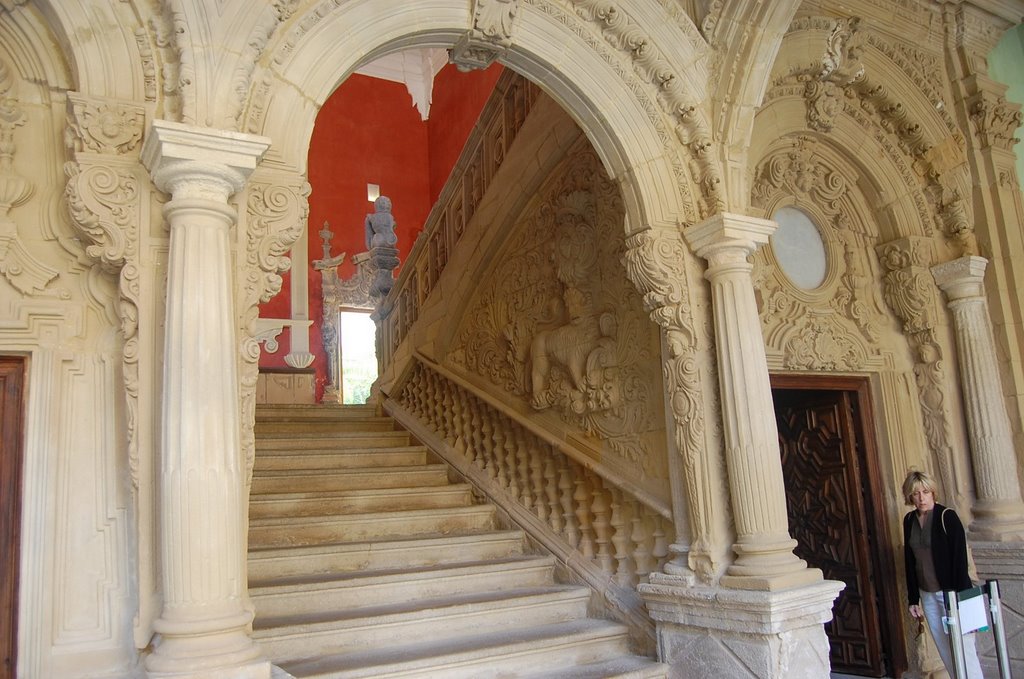
Below is the family’s view of its Renaissance
courtyard where the upper and lower galleries seem to
match. The family gave the place to Saint Philip Neri
Seminary in 1720 with the condition that the family could
stay in a room whenever they visited the town.
The government confiscated the place in the 1800s, then
gave it back to the church who has since loaned it to the
University for 90 years. If you want to see more of the
Jabalquinto Palace, we’ve posted another dozen
pictures or so of this splended Gothic and Renaissance
palacio.
Click here to see them.
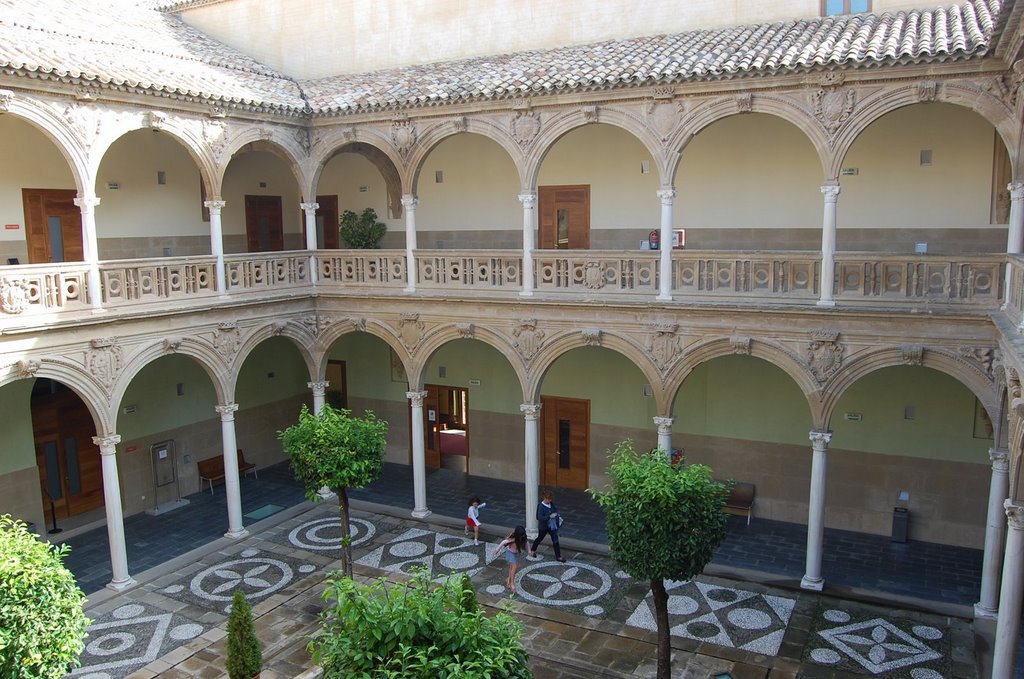
Iglesia de Santa Cruz
Across the street from the highly decorated Palacio de
Jabalquinto is the much more modest Church of the Holy
Cross (Iglesia de Santa Cruz). One of many Romanesque
churches built after Fernando III took Baeza from the
Moors in 1227, it alone survives. (If this doorway seems
a little incongruous it is because it was moved from
another church in the 1950s, sort of a facial
transplant.) Inside it’s a three-nave basilica.
While it looks quite boxy, it does have a semi-circular
apse inside, along with several 15th century frescoes
which were restored in the 1990s. Parts of the building
are very old including an arch reused from Visigoth times
(that’s before the Moors invaded in 711 AD.)
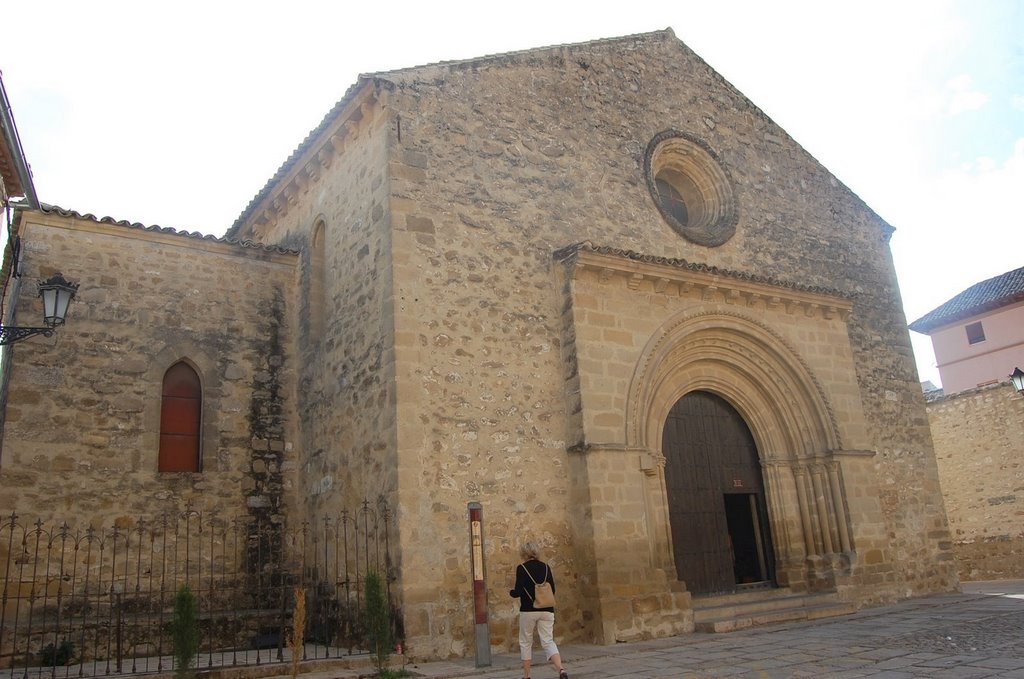
Next we visit the Cathedral and Plaza Santa Maria, please
join us by clicking here.
Please join us in the following slide show to
give Baeza the viewing it deserves by clicking here.
|
|
|
|
Geek and Legal Stuff
Please allow JavaScript to enable word
definitions.
This page has been tested in Internet
Explorer 7.0 and Firefox 3.0.
Created on 15 March 2009
|
 |
TIP:
DoubleClick on any word to see its definition.
Warning: you may need to enable javascript or allow
blocked content (for this page only).
TIP:
Click on any picture to see it full size. PC
users, push F11 to see it even larger.






